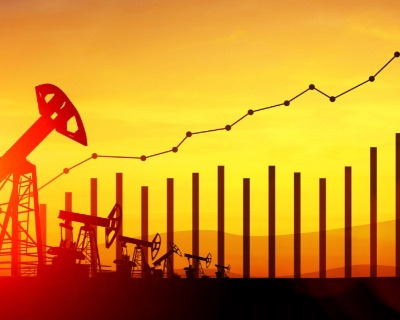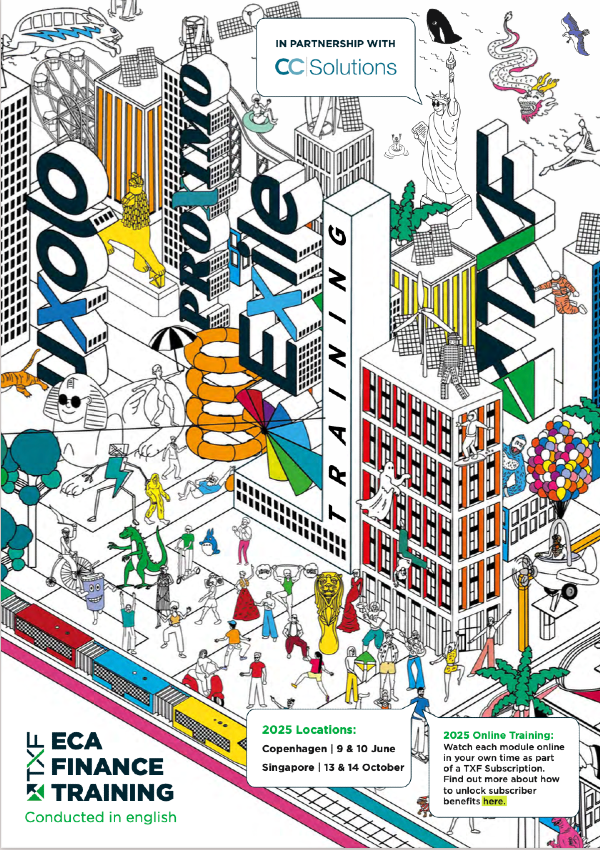Global Commodity Finance H1 2018 Report: Oil and gas volumes swell
According to TXF Data's latest number crunching oil and gas commodity financing volumes increased by $9 billion in H1 2018 compared to the same period last year. And Latin American traders saw deal flow increase by over 73% as the region takes advantage of the China-US trade spat.

Global commodity finance volumes totalled $83.7 billion in H1 2018 for both commodity producers and traders, which represents a $17.1 billion increase compared to H1 2017.
Traders signed 16 RCFs in H1 2018 compared to 22 in H1 2017, while producers signed a total of 18 RCFs in H1 2018 – nine more than in H1 2017. Unsecured RCFs accounted for 38% of the total debt in the first half of this year and represents a decrease in volumes of around $4 billion compared to H1 2017.
Oil and gas dominate volumes, again
Oil and gas remained the largest recipient sector for commercial banks loans in H1 2018. Oil and gas also retained its status as the most active sector for commodity producers in H1 2018 with volumes totalling more than $21 billion. While the number of deals remained almost the same, volumes increased by more than $9 billion compared to H1 2017. In total, commodity producers signed $43.6 billion worth of loans in H1 2018, a significant increase in volumes of $13.9 billion (32%) compared to H1 2017.
According to John MacNamara, global head of structured commodity finance at Deutsche Bank: “Oil and gas has had a happy experience with prices breaking through Q3 last year and has been comfortably sitting above $65 a barrel ever since November, which is looking like a sustainable number. But now we’re getting forecasts that if sanctions on Iran come back in then prices could go all the way up again.”
Strong start for metals and mining
Overall, the metals and mining sector also showed significant growth in H1 2018. However, this was largely thanks to one single transaction - the $9.01 billion refinancing for Glencore that represented 36.4% of the sectors overall deal volume in H1 2018. The sector had a total of 22 recorded deals.
The first half of the year saw a strong performance in terms of quantity prices right across everything outside of softs. However, in the middle of the year prices hit a grounding halt following the US’ imposition of trade tariffs. “Interestingly ferrous and non-ferrous metals prices separated massively,” says MacNamara. “Ferrous’ are still bearing up on the back of the reduced Chinese production and trump tariffs. Iron ore is also not what it was though still at reasonable levels, but aluminium has been a bit of a roller coaster with a lot of regional variation and copper dropped $1000 inside of a couple of weeks and stayed there.”
For traders, metals and mining totalled $11.4 billion in H1 2018 compared to $1.7 billion in H1 2017 – an increase of more than 84%. Even without Glencore’s $9.1 billion deal, there was still a significant increase over the same period. Higher metal prices earlier in the year meant traders funding needs were greater than in H1 2017, and therefore it comes as no surprise that deal volumes rose at beginning of the year. “With higher prices earlier in the year more financing was sourced,” adds MacNamara
European traders performed particularly strong in the sector, representing more than 27% of all traders’ debt in H1 2018. Oil and gas along with metals and mining represented 80% of all traders’ debt.
Geopolitical turmoil curtails regional growth
Europe remained the largest region for commodity trading companies with traders’ bank exposures in the region accounting for 44% of all debts. Commodity traders’ debts in Asia Pacific saw an increase of 13.7% compared to H1 2017, which saw the region push North America out of second place. Middle Eastern traders’ debt decreased by 50% in H1 2018 compared to H1 2017. Meanwhile, Latin America traders increased deal flow by 73.6% in comparison to a weak performance in H1 2017.
“Latin American traders have benefited from the China-US spat, particularly with softs,” says MacNamara. “The Chinese, for example, are the biggest global buyers of soy and have now turned to Brazil for supply, which has resulted in a 25% increase in Brazilian soy prices. But on the other hand, American soy prices have fallen leading to Europeans buying more – but now the US is confronting Europe too.”
North America was the most active region for commodity producers accounting for more than 20% of all deals in the market. Latin America commodity producers’ volumes increased significantly by nearly $6 billion in H1 2018 compared to the same period last year. Oil and gas volumes increased by 93% in Latin America in H1 2018, which helped push the region to second in the global producers table by regions. Meanwhile, the size of Russian CIS facilities decreased by 21% compared to H1 2017, although deal flow increased marginally by two transactions.
SCF volumes on the rise with BBLs leading the charge again
Total volumes for structured commodity finance (SCF) totalled $26.9 billion in H1 2018 which represents a significant increase of 33.1% ($8.9 billion) from H1 2017. Secured financing represented 32.1% of all commodity bank debt registered by tagmydeals. Borrowing base lending (BBL) loans once again led the charge in SCF totalling $16.3 billion in H1 2018, while pre-export finance (PXF) volumes decreased by 13.8% ($1.05 billion) compared to H1 2017.
The full Commodity Finance H1 2018 report is only available to subscribers. Non-subscribers interested in receiving a copy of the report please email subscriptions@txfmedia.com





